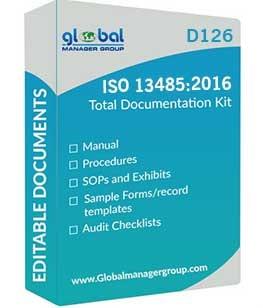Ensuring the safety and effectiveness of their products is of utmost importance for medical device manufacturers. This is where ISO 13485 comes in. This internationally recognized standard outlines the requirements for a robust Quality Management System (QMS) specifically tailored to the medical device industry. Effective documentation is a cornerstone of an ISO 13485 compliant QMS. ISO 13485 documents serve as the foundation for a structured and controlled approach to medical device development, manufacturing, and distribution.
This article explores best practices for documenting an ISO 13485 compliant QMS, highlighting key considerations for success.
While ISO 13485 provides a framework, it doesn't dictate a specific format for documentation. However, some key documents are essential for demonstrating compliance:
- Quality Manual: This overarching document serves as a roadmap for the QMS, outlining the organization's quality policy, objectives, and overall approach to meeting ISO 13485 requirements.
- Standard Operating Procedures (SOPs): Detailed instructions outlining specific processes within the QMS, such as risk management, design control, and non-conforming product handling.
- Work Instructions: Step-by-step guides for specific tasks within a process, ensuring consistency and quality in execution.
- Quality Records: Documented evidence of activities performed according to procedures, including design history files, inspection records, and training records.
- Medical Device File: A comprehensive collection of documents related to the design, development, manufacturing, and distribution of a specific medical device.
While the core documents are crucial, a well-designed QMS documentation system incorporates additional elements for optimal effectiveness:
- Version Control: A robust system for tracking document versions ensures everyone is working with the latest information and facilitates the identification of changes.
- Accessibility: Documents should be readily accessible to relevant personnel, facilitating ease of use and adherence to procedures.
- Integration: Ensure documents are interconnected and reference each other where applicable, creating a cohesive system.
A successful QMS documentation system is a living document. Here are some best practices for keeping it up-to-date:
- Regular Review and Updates: Schedule periodic reviews of documents to ensure they remain accurate and reflect current practices.
- Change Management: Establish a formal process for managing changes to documents, ensuring proper review, approval, and distribution of revised versions.
- Training and Awareness: Train employees on the importance of documentation and how to access and use it effectively.
By implementing best practices for ISO 13485 document creation and management, medical device manufacturers gain significant advantages:
- Streamlined Processes: Clear and readily available documentation promotes consistent execution of processes, leading to improved efficiency.
- Enhanced Quality: Documented procedures ensure adherence to quality standards, minimizing errors and defects.
- Facilitated Regulatory Compliance: A well-maintained documentation system simplifies the process of demonstrating compliance with regulatory requirements.
- Improved Traceability: Comprehensive documentation allows for efficient tracing of materials, processes, and decisions throughout the product lifecycle.
Conclusion:
Effective documentation is the backbone of a successful ISO 13485-compliant QMS. By following best practices for creating, maintaining, and utilizing ISO 13485 documents, medical device manufacturers can ensure the quality and safety of their products, streamline operations, and achieve regulatory compliance with greater ease.
